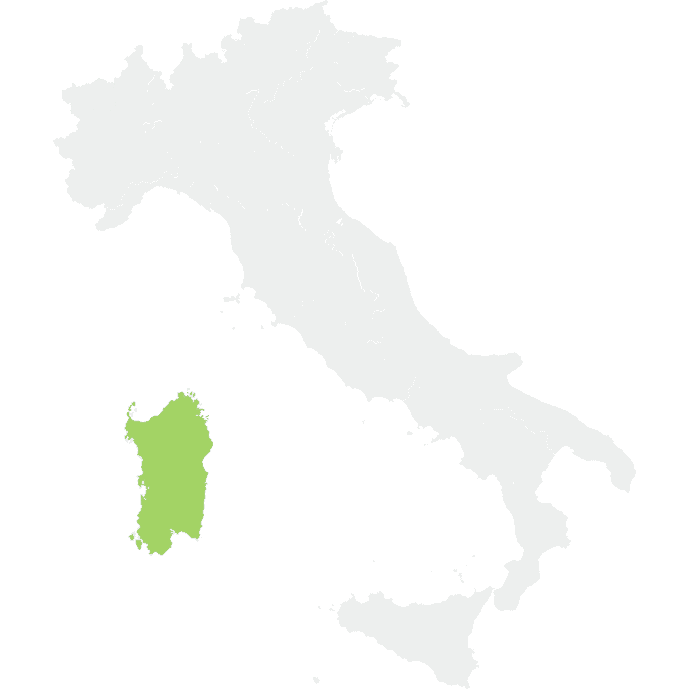After Sicily, Sardinia is the second largest island in Italy, as well as the entire Mediterranean. Sardinia was also conquered often, but here they were able to resist more.
Sardinia (Sardegna in Italian) is the second largest Mediterranean island after Sicily. Grape seeds found in archeological sites there are believed to date back to the 8th century B.C.E., the oldest known evidence of viticulture in Italy. But it wasn’t until the island became part of Italy that the production of fine wine began on the island. By the end of the 19th century, wines from Sardinia were already well known for their quality. The main grapes grown there today are Cannonau (akin to the Spanish Garnacha and French Grenache), Vermentino, and Carignano (akin to the French Carignan). One of the things that makes Sardinian viticulture so compelling is that much of the island’s surface area is still undeveloped. The lack of development helps to bolster biodiversity. Combined with the maritime influence of the Mediterranean, this creates the ideal conditions for the production of fine wine.






